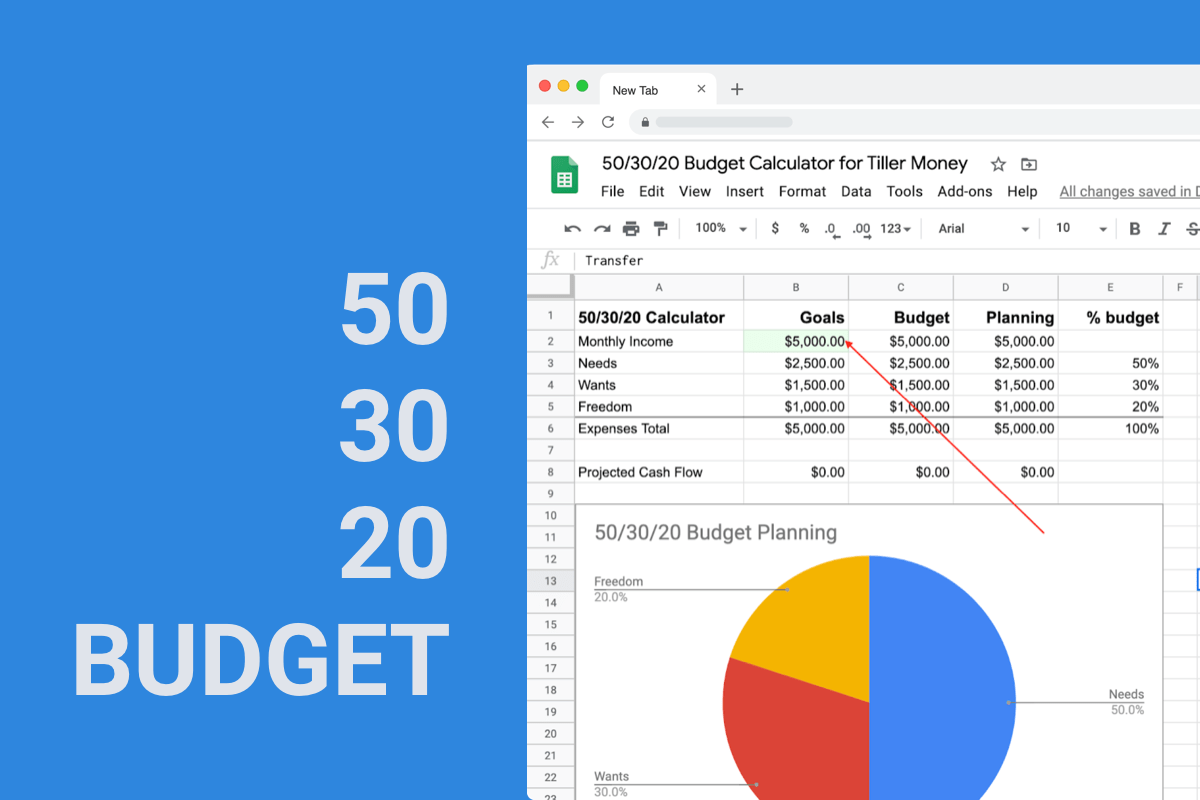How to Make a Household Budget – Plus Free Spreadsheet Template

Wondering how to make a household budget that works for your family?
Wonder no more! Here are the steps you’ll need to follow to build your monthly budget, along with an easy and absolutely free household budget spreadsheet.
Identify your household’s budgeting goals
Before you get started with your family’s household budget, it can be helpful to sit down and identify your goals.
Odds are there was a defining event that led you to sit down and make a budget. What was that event, and what about it motivated you to your money right?
Maybe you are in a ton of debt. Maybe you want to leave the paycheck-to-paycheck cycle behind. You might want to retire early or simply be able to go on a family vacation every year.
Whatever your budgeting goals are, if you identify them before you start, it will help you prioritize your spending later on in the process.
Track your spending habits

Budgeting is all about modifying your behavior. Sure, it’s about numbers and spreadsheets, too. That’s a big part of it.
But at the end of the day, you’re not going to meet your financial goals if you don’t actually change what you’re doing. Before you can change what you’re doing, you need to be aware of it.
That’s why it is imperative to track your spending habits. This will help remind you of the bills you pay on a monthly basis, identify bills you might be able to negotiate, and help you understand how much all those innocent-seeming $5 purchases you make here and there throughout the week can really add up.
Ideally, you’ll track your spending for at least three months. You don’t have to wait until three months from now to write your budget, though. You can simply download your statements from your financial institutions for the last three months, or import them using your favorite budgeting software or app.
Categorize your expenses+

Now that you know what your expenses are, you’ll want to categorize them. You can categorize them into groups such as:
- Groceries.
- Utilities.
- Clothing.
- Entertainment.
- Insurance.
- Kids’ activities.
- Car payments.
- Etc.
In addition to these categories, you’ll want to tag each expense as either “Essential” or “Nonessential.”
Identify essential expenses.
Essential expenses include things like rent, mortgage, groceries, and utility bills. These are expenses that you cannot live a healthy life without.
Essential expenses may occur every month, or they may be more irregular. For example, if you need a car to get to work, every year you’re going to need to pay to get that vehicle inspected. You’re also going to need to pay for maintenance. You might not incur the costs every month, but they’re big ones that you’ll want to save for and schedule.
Cut or limit nonessential expenses as necessary.
If an expense is nonessential, that means you can cut it in pursuit of other goals. You can also cut these expenses if economic times are hard and you’re struggling to get by.
Examples of nonessential expenses might include:
- Clothing shopping beyond your basic needs
- Vacations
- Entertainment
- Dining out
- Streaming services
Bear in mind that nonessential expenses can be irregular, too, like purchasing a birthday gift for that party your child got invited to, or purchasing concert tickets after your favorite band of all time announces they’ll be performing in your town for the first and probably last time.
Once you’ve identified spending as essential or nonessential, you can start to take a hard look at your behaviors versus your goals. Are they aligned?
Are you able to sacrifice some of those nonessential expenses for a short time in order to meet your money goals?
Ask yourself these questions and modify your behavior accordingly.
Automate as much as you can.
While not a mandatory part of the budgeting process, automating your finances as a part of the process can help modify some negative behaviors.
For example, if you set up an automatic transfer of $50 from your checking account to your savings account every payday, you won’t have a chance to spend the money you meant to put towards your emergency fund. If you’re paid biweekly, in just under ten months you’ll have a $1,000 emergency fund with minimal effort.
Automation can also be helpful across the following areas:
- Paying monthly bills.
- Paying off debt.
- Setting aside quarterly taxes.
- Saving for vacation.
- Saving for retirement.
Try this free household budget spreadsheet template

Want to get a jumpstart on building your household budget? Try this free household budget spreadsheet template.
It’s based on Tiller’s popular, premium Foundation Template for Google Sheets.
Click to open the household budget. Then click the blue “Use Template” button to install the template in your Google Drive. Instructions for how to use it are included.












You must be logged in to post a comment.